
Early American households sounds like a mundane subject, but we have been taught an unrealistic view of them. Families formed the base for revolution. Revolution could not have happened without strong, patriotic, and religious families. Most depictions of early families are romanticized. They show very clean people wearing immaculate clothing. Homes are shown as very clean and neat, and food is plentiful and perfectly prepared. This is okay for children’s books, but it is not true. Most people, especially common folks, did not bathe very often. They had little clothing and what they had was worn for long periods.
The first permanent English settlement was Jamestown (Virginia) in 1607. The second settlement, Massachusetts Bay, was not established until 1620. Between 1630 and 1640 more than 20,000 new colonists arrived, and a high level of migration continued through the colonial period.
Most migrants were English hoping to improve their lives. They also wanted to escape a social system that kept a person in the class they were born into. Although the European model of strict social classes was not enforced in the American colonies, there was a loose form of social status as follows:
- Wealthy landowners
- Merchants and clerics
- Farmers, Artisans and Laborers
- Indentured Servants
- American Indians
- Slaves
There was considerable fluidity within the classes, except for the last two. There were free-born blacks and freed slaves, but they usually could not move up the ladder much. Indians and slaves could not move up at all.
Most Americans respected those who worked hard and succeeded, which encouraged others to emulate them. Americans were restless and wanted to succeed, which resulted in the pressure to move west for more land and more opportunity.
Most migrants were male and came to the New World voluntarily. However, the new colonists included a substantial number of convicts, orphans, mental patients, etc. England was using the colonies as a place to empty their prisons and other institutions, a practice they later continued on a larger scale in Australia.
The cost to cross the Atlantic was out of the reach of most common people, so many came as indentured servants. These people contracted to work for four to seven years for the cost of passage to the colonies, food, and shelter. This was voluntary slavery, but at the end of their service they were given land, tools, and a firearm. In the early days of the colonies, some former indentured servants rose to the elite class.
After experiencing a hazardous, crowded, and uncomfortable Atlantic crossing, new migrants found the New World challenging. There were no aid programs and they had to obtain shelter and food right away. They had to work hard just to survive. Many became small farmers or laborers.
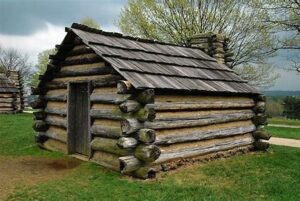
Migrants had to construct a home with their own hands. This was usually a one-room wooden or log structure with dirt floors, a fireplace and sometimes a sleeping loft. Many homes had thatched roofs. Most towns featured wood frame houses.
Obviously, wooden structures were prone to fire since the fireplaces, oil lamps and candles were all a threat. Most large towns and cities suffered multiple catastrophic fires, which resulted in moving to stone and brick structures.
Most small homes had no glass windows because glass was very expensive and in short supply. Window openings were covered with cloth or paper or whatever was available. Various herbs were hung around to repel insects. Most of these homes had dirt floors and little furniture. The furniture usually had to be handmade. Early settlers had to import needed items if they could afford to do so. Otherwise, items had to be made, or they had to do without.
New settlers also faced many physical and environmental dangers. There were few doctors, and most were in the larger towns such as Boston, Philadelphia, and New York. Many of the early doctors still used bloodletting as their treatment for practically everything. Work related accidents, particularly farm accidents, were a major cause of death and disability and remained so until the late nineteenth century.
Minor illnesses were usually treated in the home using home remedies. The major diseases that settlers faced included Yellow Fever, Smallpox, Malaria, and Typhoid. These often reached epidemic proportions. The well-to-do in big towns and cities moved their families to the country during epidemics and wealthy planters had second homes away from outbreaks of these diseases. Poorer people had to tough it out where they were and consequently suffered the most deaths.
Childbirth was the major killer of women. They were expected to marry and have children because children provided labor and an expanding population was necessary for the longevity of society. The death of so many women resulted in many young widowers who tended to remarry, often to much younger women, very quickly. This also meant that men could father even more children.
A little-known fact is that our colonial forebears had a very liberal view of pre-marital sex. Women were often in short supply and there was little time for courtship. A substantial percentage of women were pregnant when married and this was totally acceptable, and often encouraged. Preachers were in short supply in rural areas and couples could not wait for traveling preachers to show up. They got pregnant, moved in together, and made it official when a preacher showed up. More prudish attitudes on sex did not happen until the mid-nineteenth century
The second generation in the colonies tended to be healthier than their parents. The Europe the parents had left was very crowded. Communicable diseases were rampant among the poor, food was expensive, and much of it was vermin infested. Potable water was nearly impossible to find.
The children of even the poorest new settlers lived in a much healthier environment. More space, cleaner air and water. Food was cleaner and included fresh vegetables and meat because most people had gardens and could hunt for fresh meat. This resulted in children that were more resistant to disease and were healthier in general. However, most people believed bathing was unhealthy so personal hygiene was really bad compared to modern standards
One other factor contributed to the dangers faced by colonists, particularly those living in isolated communities and farms. Indian tribes were not pleased with the encroachment on their lands and conducted deadly raids against the settlers. Most raids were conducted by small war parties and resulted in few casualties on either side, but some resulted in multiple deaths and wide destruction of homesteads.
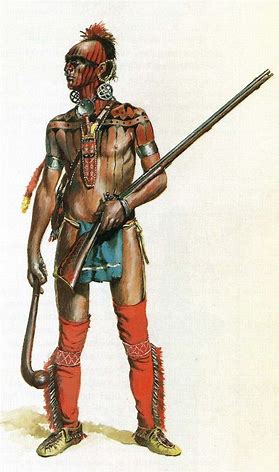
Settlers retaliated with the same brutality and massacre of Indians were common. There were multiple Indian wars with many casualties on both sides, but the better armed settlers had the advantage over the long run.
Wars between the colonial powers featured Indian tribes allying themselves with the warring side they perceived most friendly to them. In truth, the Indians always lost because no colonial group really sided with them.
Early Indian wars were the precursor to those that would plague the westward expansion of the United States for nearly 200 years. Unfortunately, whites had a history of broken promises, and the conflicts would result in thousands of deaths, particularly Indian deaths.
The family was, and still is, the fundamental unit of society. Despite the many challenges faced by colonial settlers, they settled into a life of family unity, religion, and hard work. Women who survived multiple childbirths often gave birth to 10 to 15 children, but Infant mortality was about 50 percent.
The average family size is a matter for debate, but it is true that rural families were usually larger than urban families. Farmers and other groups with high labor requirements had the most children because more children meant more laborers, which resulted in greater profits. Colonial households often included stepchildren, aunts, uncles, grandparents, and other extended family members.
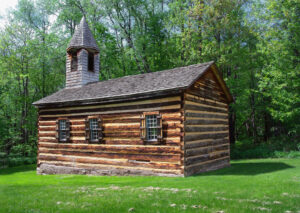
Most early Americans were Christian and deeply religious. Religion was the glue that held society together and gave common people hope for the future. Congregations initially met in homes until churches could be built. Sabbath services were well attended and gave people a chance to visit with neighbors. Sabbath attendance was required in some areas of New England.
Colonial religion included a belief in the supernatural world of angels and evil spirits and those forces were competing and always nearby. These beliefs could occasionally get out of hand and result in unintended consequences. The most infamous of such a time was the Salem Witch Trials.
Generally speaking, men were responsible for outside work and women oversaw household chores including raising the children. All had to work hard and when children were old enough, they were required to help the adults.
Women were in charge of educating the children. They taught the children to read and to do simple arithmetic. Most used the Christian Bible to teach children to read. This served a dual purpose in that it also provided religious and moral instruction, which was necessary for a stable and cohesive society.
This level of education was sufficient for the working class, and few went on to more formal education. Massachusetts was the only colony to require public education The wealthier classes usually sent their male children to more advanced schools to prepare them for entry to society and for careers in law or other professions.
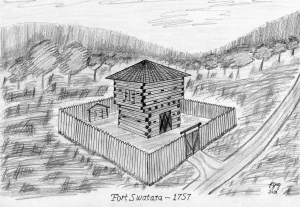
Some settlers were very isolated and far from civilization. They did not have a community of any kind other than their family and the local Indians. These settlers often had gathered up all their nuclear and extended family and moved far from civilization. They would first build a fort for protection. They farmed, raised livestock, and hunted. They tried to have a mutually useful relationship with the local Indians but were ready to defend themselves and strike back when necessary.
My own ancestors moved into the Smokey Mountains of what is now known as Tennessee during colonial days because “the east was too crowded, and taxes were too high.” They did what is outlined above. From there some of them moved on west as far as California and Alaska trying to stay ahead of civilization. Later when other settlers arrived, some of the remaining family assisted in building a town.
A day in the life of a farming family was work from sunup to sundown. The father and any other adult males in the family worked in the fields. They were assisted by the male children who were old enough to assist in this physically demanding and dangerous work. Depending on the adult, this age could be 10-years old or even younger.

Farming was all done by hand. Some could not afford draft animals and the biggest males pulled the plow with a youngster guiding the plow. Guiding the plow was not as easy as it sounds. Even with draft animals this work was very demanding.
Equipment had to be maintained and repaired, which was often done during the evening. Most of the equipment was homemade and crude. Small grain seeding was broadcast but seed corn had to be pushed into the soil. Small grain harvesting was done by beating it on a hard surface, as it had been done for thousands of years.
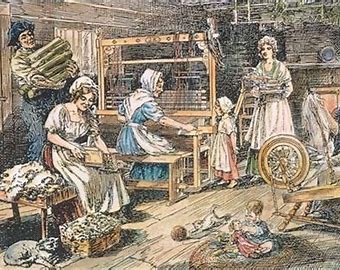
While the men worked outside, women were working just as hard inside. They prepared three meals a day, using pots in the fireplace. There was no store to get food, so they had to prepare everything from scratch using menu items that were grown in their garden. Flour was made by crushing wheat grown on their farm. If they were lucky, they had cows or goats to give milk and some for slaughter. Hunting wild game was the most common source of meat. Meals were basic with no frills. Women sometimes baked sweets for a treat. Fruit sugar provided the sweetness because refined sugar was a real luxury.
Adult women were assisted by the girls in the family and very young boys. The children took care of the family garden until they were old enough to do adult work.
Sewing was quite important so they could make and repair clothing and bedding. Washing clothing and bedding was done using a hand washboard often in a nearby stream. Washed items had to be wrung out by hand and hung on a clothesline. If any pressing was done, the iron was heavy cast iron, and it was heated in the fireplace. Washing clothing and bedding was not done often because people did not see cleanliness as a priority.
Life was not easy for women. They had children often and many died during childbirth. Sometimes they had no help giving birth other than their daughters and husband. About 50 percent of children did not survive childhood so deaths were frequent. Family graveyards filled up rapidly.
Usually, bedtime was at sundown because all were tired, and candles had to be handmade and could not be wasted. If the home had a loft the parents slept there. If there was no loft they slept on the floor (usually a dirt floor) with the children.

Although all members of a family were required to work hard and long hours, there was some time for play and relaxation. Children found time to play with homemade toys and they played games, such as tag. Sledding during the winter was popular in the north.
Families sometimes gathered with neighbors to share a meal and to have games. Usually, these gatherings were held to accomplish some community project such as a barn raising or crop harvesting. Women often gathered for sewing bees, canning food, and other large projects.
Our ancestors endured much while building this country and they sometimes had to defend their homes from Indian raids. Some families were wiped out by Indians and in some cases children and women were taken captive. Indians also destroyed crops and killed livestock. Disease could also wipe out entire families.
The death of a husband or wife could be catastrophic because the survivors had to take on all that person’s work. If a surviving spouse could find another mate, they did so as soon as possible because survival often depended on it.
Early families were independent, hard working, and they persevered. They built a national community of patriots that made the Revolution possible. The elite provided the words and organization, but it was mostly the hard-working common people that fought for and physically built the country.
